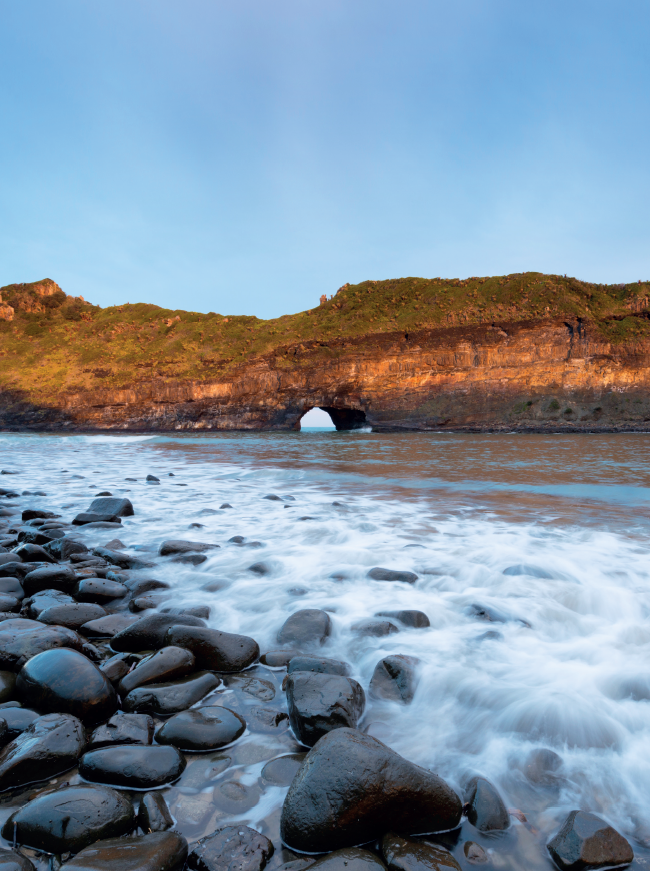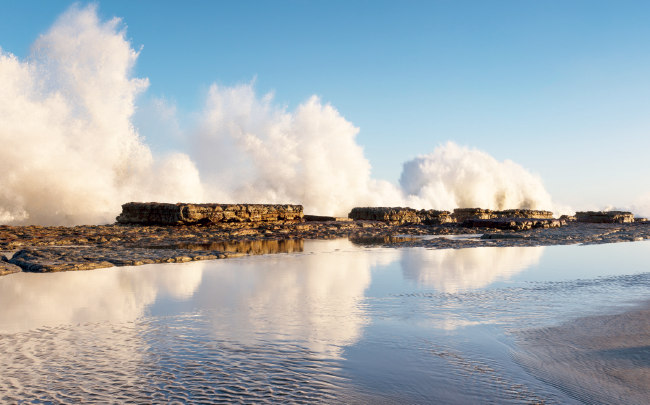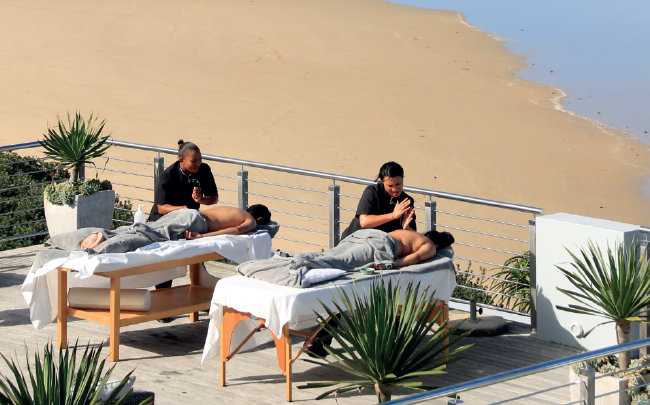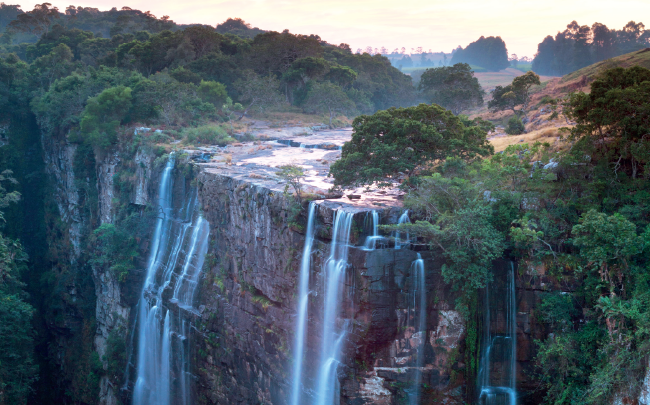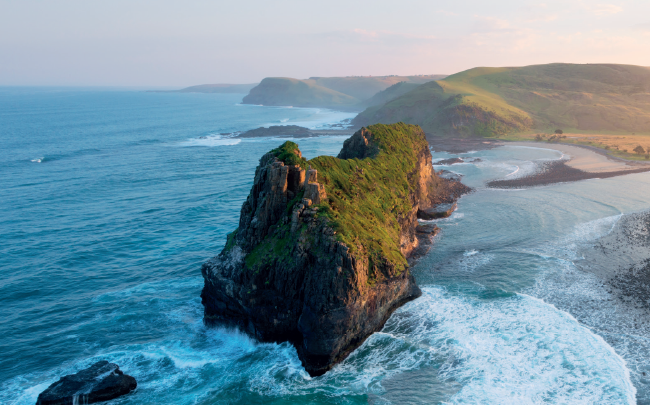The rugged stretch of coastline between East London and Port Edward may officially be part of the Eastern Cape, but few who visit the area call it anything other than its nickname: the Wild Coast.
Whether you’re walking the cliffs of Waterfall Bluff or letting the roar of the Indian Ocean fill your ears at Hole in the Wall, there’s a rawness to the landscape – a sense of nature untamed. It’s little wonder, that travellers, beguiled by the natural beauty, keep returning to the Wild Coast.
While summers can be fiercely hot and the rivers swollen with heavy rains, winters bring mild days and clear skies. Perfect weather for soaking up the sun on the region’s famous beaches and enjoying the warm seas, yet moderate enough to spend the whole day out exploring.
Not that you’ll keep an eye on the clock. Deadlines count for little at the Wild Coast. The hours stroll by at a relaxed pace, the days disappearing in a haze of long beach walks, lazy afternoons and idyllic evenings. Throw in a warm ocean and a cold sundowner and you’re set for a winter break that you won’t forget. If you need a change of pace, this is the right place.
The most direct route is to fly into East London and drive north. Or you can opt for Durban and enjoy the two-hour drive south.
If you’re visiting the Wild Coast for the first time, there are a few spots you’ll want to push straight to the top of your to-do list. The attractions of the Wild Coast are postcard-perfect for a reason, and you’ll want your own Instagram-worthy snaps of the region’s big-ticket items.
Start at Hole in the Wall, south of Coffee Bay. The dramatic rock arch just off the coast has been carved by millennia of wave action, the ocean patiently chipping away at the rock of shale and sandstone. If you’re feeling energetic, take a walk along the three-hour coastal trail from Coffee Bay – the path takes you past the smaller ‘Baby Hole’ and the Hlungwane waterfall.
There are, however, landscapes worth seeing up and down the coast, from the indigenous coastal forests of the Silaka Nature Reserve, south of Port St John’s, to the waterfalls of the Mkambathi Nature Reserve. The Horseshoe Falls, tumbling directly into the sea, shouldn’t be left off your itinerary. The 7 000 ha Mkambathi reserve also offers the chance to spot eland, red hartebeest and blue wildebeest.
The Wild Coast offers a wide variety of accommodation. The region has long been popular for its rustic self-catering cottages, but a new breed of upscale resorts and lodges is adding a dose of luxury to a Wild Coast escape. If you’re exploring the southern reaches of the Wild Coast, Prana Lodge is less than an hour’s drive from East London airport. It is set on a 7 ha private estate that opens onto a 21 km swath of pristine sand.
Each of Prana’s seven suites has its own private garden and plunge pool. The lodge has also established itself as a gourmet destination. Look out for its exclusive wine dinners, with executive chef Jaycee Ferreira teaming up with local vintners to present an evening of coastal cuisine and fine wine.
Prana has a dedicated spa facility offering a number of treatment rooms, hydrotherapy facilities and two outdoor pavilions. Many of the bespoke oils, rubs and infusions are made with herbs picked in the lodge gardens.
While Prana Lodge is aimed primarily at couples and honeymooners, nearby Miarestate Hotel and Spa is for families who want a five-star break. Miarestate blends bush and beach, with activities ranging from gourmet beach picnics to guided nature walks across the 720 ha estate. And for parents dreaming of downtime, the Zebra Zone Clubhouse keeps children entertained.
The Wild Coast is well known for its family-friendly seaside hotels, many of which have been around for decades. The one you choose depends largely on where you plan to explore. In the north, Mbotyi River Lodge lies in the heart of Pondoland at the mouth of the Mbotyi river, and offers activities from bird watching to canoeing.
Umngazi River Bungalows is another Wild Coast classic. It began life almost a century ago as a small trading post offering a few humble bungalows at the back, but has since mushroomed into a sprawling family-focused resort. Highlights are the sunset cruises on the Umngazi river and the Saturday Night Seafood Feast, a favourite among loyal Umngazi regulars.
Further south, Morgan Bay Hotel, Trennerys Hotel in Qolora Mouth, and the Ocean View Hotel in Coffee Bay have long drawn visitors with their blend of country charm and unbeatable seafront location. What they may lack in glamour and mod-cons they more than make up for with their hospitality and rooms situated mere steps from the beach.
Of course, it is the beaches that attract most visitors to the Wild Coast. While the waters offshore offer surfing, diving and fishing, there are endless stretches of beach where you can find a dollop of Pondoland peace and quiet.
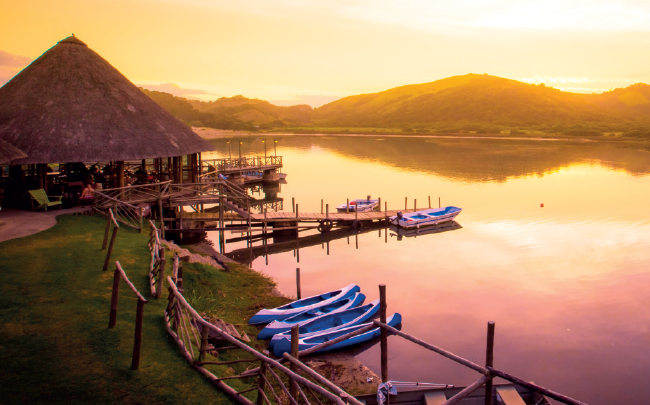
Don’t expect Mauritian-style perfection though. You may end up sharing the sands with a herd of local cattle, or fishermen casting a line into the deep. The seas can be rough and the coastline rugged, but that’s part of the charm.
If that sounds a little too rugged, aim for the southern reaches beyond East London. Here the likes of Morgan Bay, Chintsa and Haga-Haga offer the right balance between beauty and powder-soft sand.
While the natural beauty of the Wild Coast is undoubtedly the main draw card, the region is also famous as the birthplace of Nelson Mandela and there are two destinations devoted to SA’s most famous statesman. The Nelson Mandela Museum in Mthatha is home to a wide-ranging exhibition on Mandela and his achievements, but you’ll find the most revealing glimpse of Madiba in his home village of Qunu.
Here, the Nelson Mandela Youth and Heritage Centre celebrates the place where Mandela spent his formative years. Featured are the remains of Mandela’s primary school – where he was ‘given’ the name Nelson on his first day of school – alongside his original childhood home, his former private home, and the graveyard – although the public does not have access to his grave – where he was buried.

